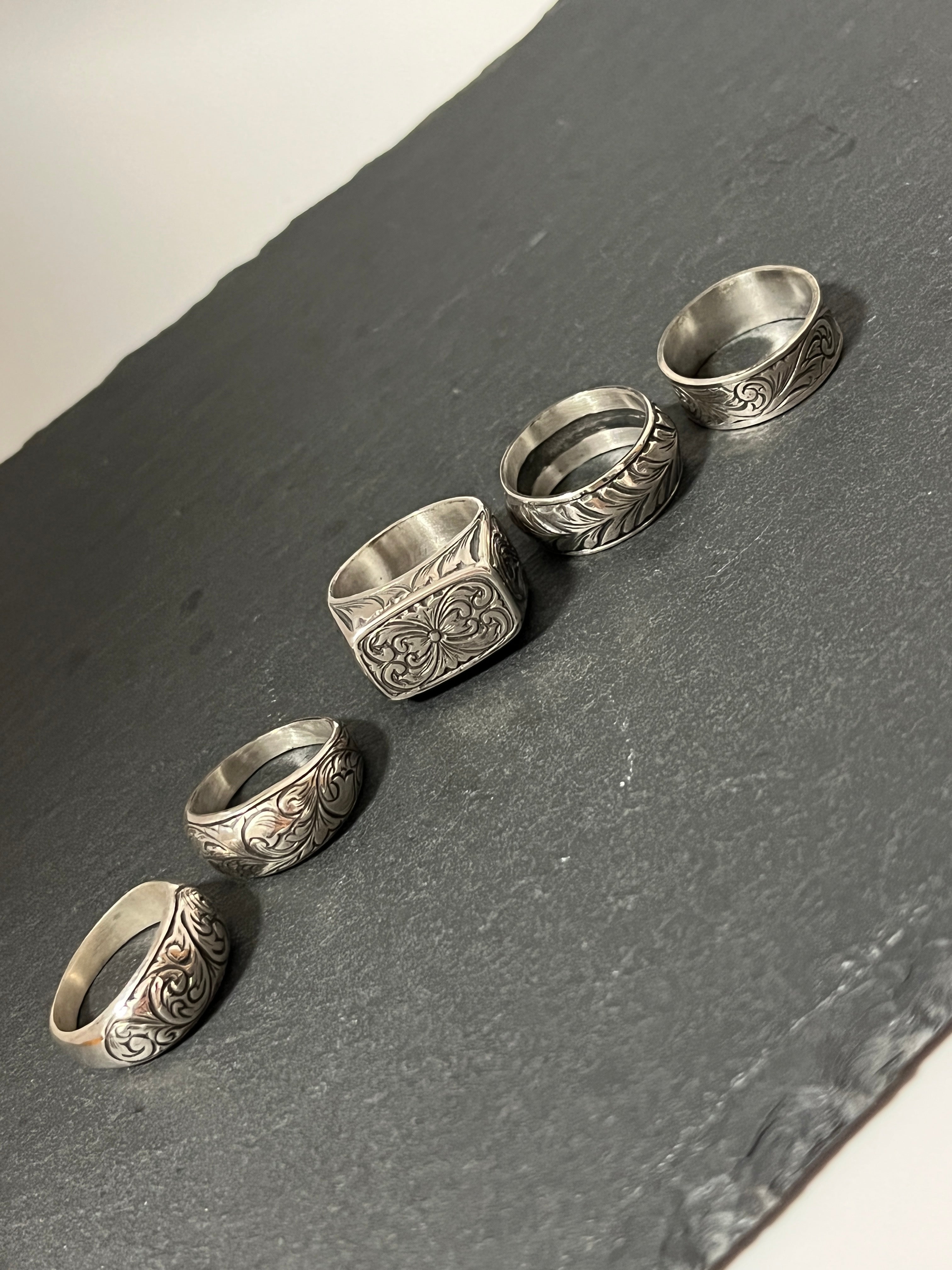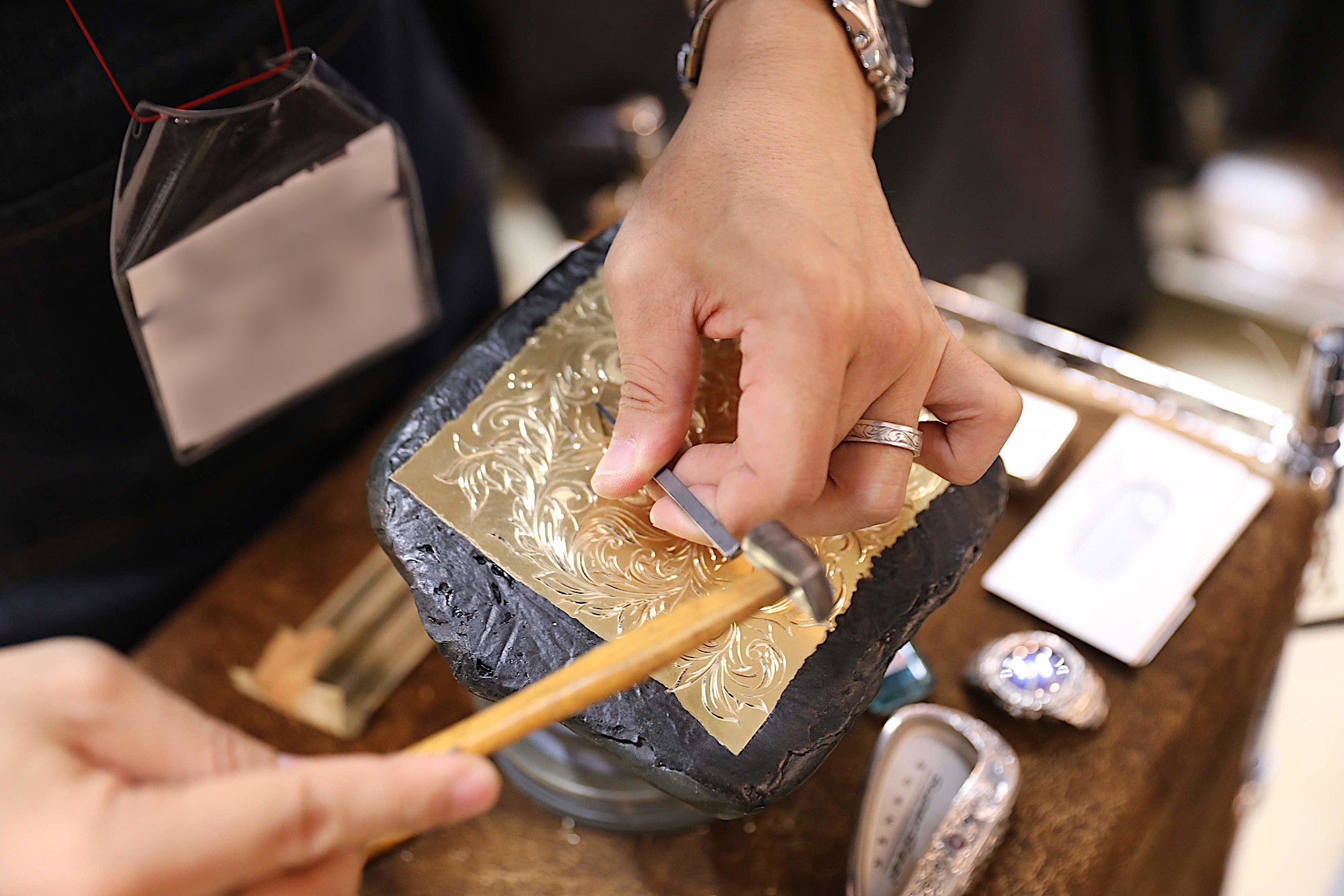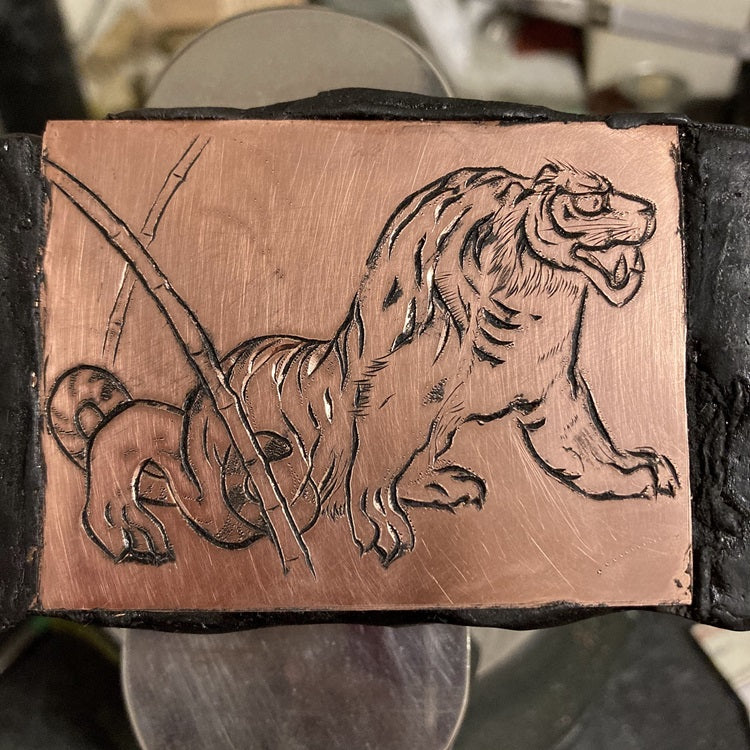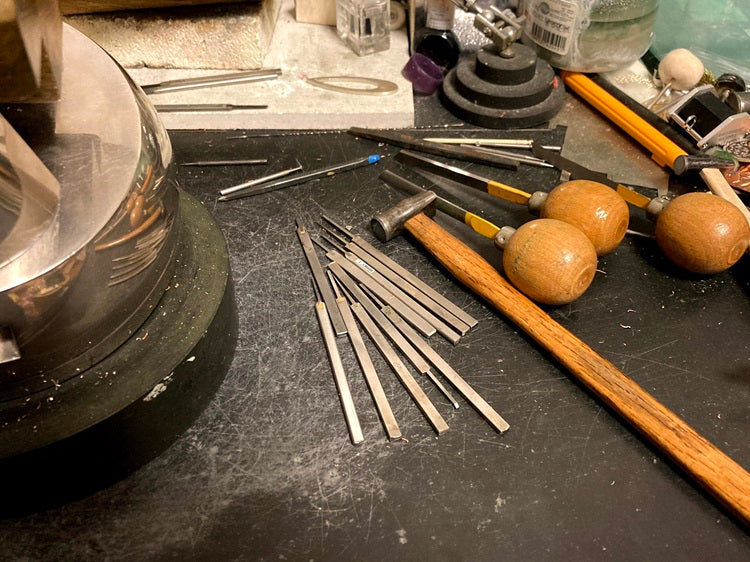About Engraving
Traditional technique ``metal engraving'' is used for IMULTA products and engraving orders.
It is a traditional technique that has a long history in metal crafts and continues to be loved.
Metal engraving is a traditional technique that has been passed down to Japan since the Nara period, and developed during the Kamakura and Muromachi periods when the samurai became popular, and was mainly used to decorate armor, helmets, and swords.
Each stroke of a metal chisel called Tagane is used to engrave patterns into the surface of the metal product being processed.
This allows for detailed and delicate decorations that cannot be achieved with other techniques.
It is used to decorate a wide range of metal products, and examples that are easy to imagine include decorations for temples, shrines, mikoshi, and May dolls.
Even if you don't know the name metal engraving, it can be said to be a surprisingly familiar traditional technique.
Metal engraving techniques were introduced to Japan during the Nara period, and blossomed during the Kamakura-Muromachi period with the rise of the samurai.
"Oiebori", which is mainly used to decorate swords, was established and developed by the Goto family.
The Goto family is a famous family that has been involved in coin minting and manufacturing of small coins (large coins at the time) since before the Edo period.
At that time, this was a technique used for the belongings of some upper-class samurai.
In the middle of the Edo period, Yokoya Somin established "machibori'' and it began to be used for everyday items such as kissels.
However, in the Meiji period, armor, helmets, and swords decreased dramatically due to the enforcement of the Sword Abolition Ordinance.
Therefore, it began to be used in everyday items such as cigarette cases, hairpins, obi clips, and changed to match the times.
Kano Natsuo, who designed and created the Meiji gold coins, is also a very famous metal engraver.
In modern times, metal engraving is used to decorate a wide range of metal products, not just everyday items, such as jewelry and zippo accessories.
In modern times, the technique called metal engraving refers to the following three techniques.
- Metal engraving: Carving patterns into metal and creating shapes by carving
- Metal forging: Forming metal by hitting it with a hammer etc.
- Casting: Molding metal by pouring it into a mold
Originally, "metal engraving'' refers only to the technique of carving patterns into metal.
However, in modern times, metal shaping and polishing techniques are generally referred to as "metal engraving.''
Many people think of metal engraving as carving traditional Japanese patterns and motifs, but in reality, it is possible to carve a variety of patterns without being limited to Eastern or Western motifs.
IMULTA's representative metal engraver, Uetani, is most skilled at the "metal engraving" technique of engraving patterns.
Each piece of jewelry we sell is hand-carved.
Metal engraving techniques exist overseas as well, and Japanese metal engraving is generally referred to as ``Japanese engraving,'' while overseas metal engraving is referred to as ``Western engraving.''
Italian copperplate engravings and Hawaiian jewelry popular in Japan are also engraved using Western engraving techniques.
Traditional Western engraving involves gripping a chisel and using the force of the gripped hand to push forward and carve.
Therefore, a hammer is not used, and the shape of the chisel and the shape of the carving table used for fixing the carving, as well as the traditional patterns and motifs, are different from Japanese engraving.
One of the characteristics of Western engraving is that the mechanization of tools is progressing, and currently carving using machines is the mainstream.
The technique used at IMULTA for jewelry production and engraving orders is basically Japanese engraving, but depending on the design, Western engraving may be incorporated.
